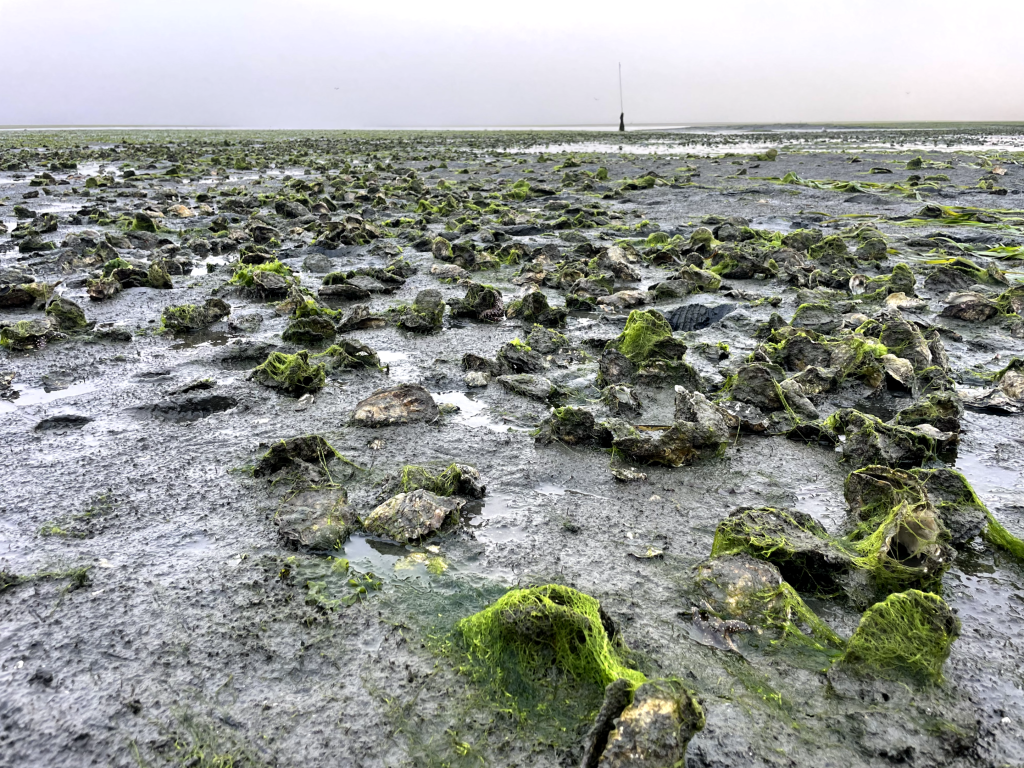
Broadcast bottom culture (sometimes called bottom or bed culture) is a method of growing oysters that mimics shellfish reproduction on a natural oyster reef. The oysters start their lives in the nursery, where they are attached to hard substrates – often empty recycled oyster shells – and grow until they are about a half an inch in size. The seed is then placed either directly on the seafloor or in a "bed." The bed needs to be firm mud so that the oysters do not sink below the surface and suffocate. Here, on firm mud, oysters grow to full size, filtering microalgae and minerals from the silt and mud that are suspended in the water.
Oyster bottom culture is a low-maintenance form of oyster farming relative to suspended longline culture. There is little gear and preparation involved in getting the oysters started in the beds. Some farmers implement “shell planting,” which involves placing recycled oyster shells on the seafloor to encourage oysters to settle naturally. “Natural set” oysters refers to oyster larvae that have spawned from naturalized populations rather than hatcheries. It takes about three years for oysters to become fully grown. They can then be harvested with an oyster dredge or even by hand depending on the size of the farm.
One of the biggest problems with bottom culture methods is that oysters are often susceptible to predation from sea snails, sea stars, and crabs. Some oyster farmers take precautions to protect the oysters, such as monitoring the oyster beds during low tides and removing any predators. Additionally, burrowing shrimp causes issues for bottom culture operations because the shrimps’ burrowing activity creates soft and unstable mudflats. Oysters become buried through sediment deposition, sink into the mud and suffocate.
Manila clams are also cultivated using bottom culture. Some growers enhance muddy substrate by adding washed gravel or recycled shells because of clams' tendency to dig. Some clam beds are naturally occurring and do not require hatchery supplementation. However, in some locations, natural set is enhanced by adding clam seed from local farms or nearby hatcheries and planted overtop a natural clam bed. In this scenario the new seed allows natural seed to repopulate. Predator netting is widely used in manila clam culture. Large nets are placed over the crop to help prevent predators from eating the clam seed.
Image captions and credits
Oysters broadcast on bottom sediment in intertidal shellfish farm; Washington Sea Grant